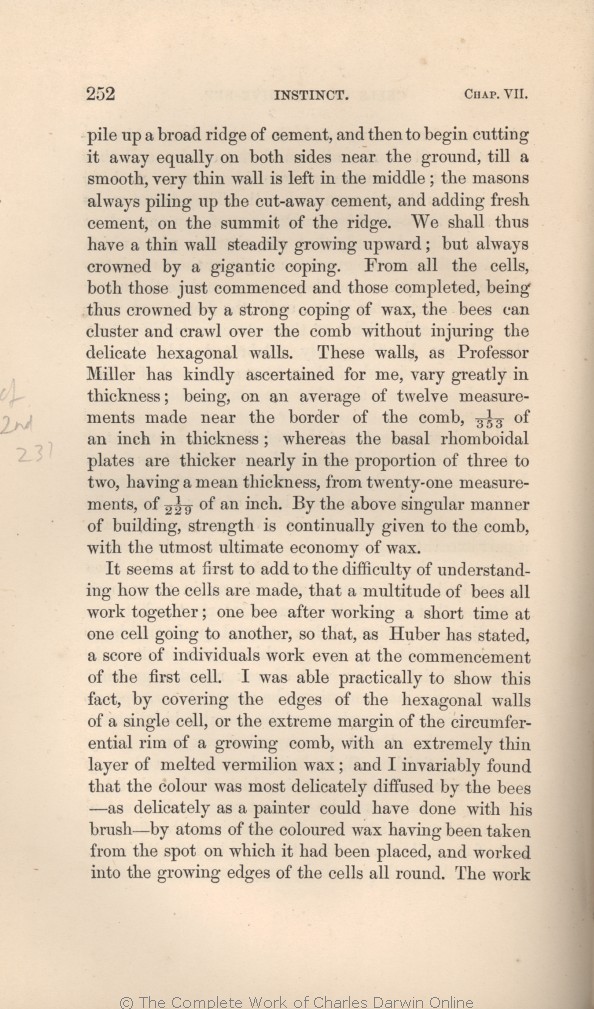pile up a broad ridge of cement, and then to begin cutting it away equally on both sides near the ground, till a smooth, very thin wall is left in the middle; the masons always piling up the cut-away cement, and adding fresh
cement, | cement, 1859 1860 1861 1866 | | cement 1869 1872 |
| upward; 1859 1860 1861 1866 | | upward 1869 1872 |
| walls. 1861 1866 1869 1872 | | walls, 1859 1860 |
| ..... 1861 1866 1869 1872 | | which 1859 1860 |
| ..... 1861 1866 1869 1872 | | are 1859 1860 |
| ..... 1861 1866 1869 1872 | | only 1859 1860 |
| ..... 1861 1866 1869 1872 | | about 1859 1860 |
| ..... 1861 1866 1869 1872 | | one 1859 1860 |
| ..... 1861 1866 1869 1872 | | four-hundredth 1859 1860 |
| ..... 1861 1866 1869 1872 | | of 1859 1860 |
| ..... 1861 1866 1869 1872 | | an 1859 1860 |
| ..... 1861 1866 1869 1872 | | inch 1859 1860 |
| ..... 1861 1866 1869 1872 | | in 1859 1860 |
| ..... 1861 1866 1869 1872 | | thickness; 1859 1860 |
| ..... 1861 1866 1869 1872 | | the 1859 1860 |
| ..... 1861 1866 1869 1872 | | plates 1859 1860 |
| ..... 1861 1866 1869 1872 | | of 1859 1860 |
| ..... 1861 1866 1869 1872 | | the 1859 1860 |
| ..... 1861 1866 1869 1872 | | pyramidal 1859 1860 |
| ..... 1861 1866 1869 1872 | | basis 1859 1860 |
| ..... 1861 1866 1869 1872 | | being 1859 1860 |
| ..... 1861 1866 1869 1872 | | about 1859 1860 |
| ..... 1861 1866 1869 1872 | | twice 1859 1860 |
| ..... 1861 1866 1869 1872 | | as 1859 1860 |
| ..... 1861 1866 1869 1872 | | thick. 1859 1860 |
| thicker 1861 1866 1869 | | thicker, 1872 |
| the above 1861 1866 1869 1872 | | this 1859 1860 |
|
|
It seems at first to add to the difficulty of understanding how the cells are made, that a multitude of bees all work together; one
bee | bee 1859 1860 1861 1869 1872 | | be 1866 |
| with 1859 1860 1861 1866 1869 | | it with 1872 |
|









